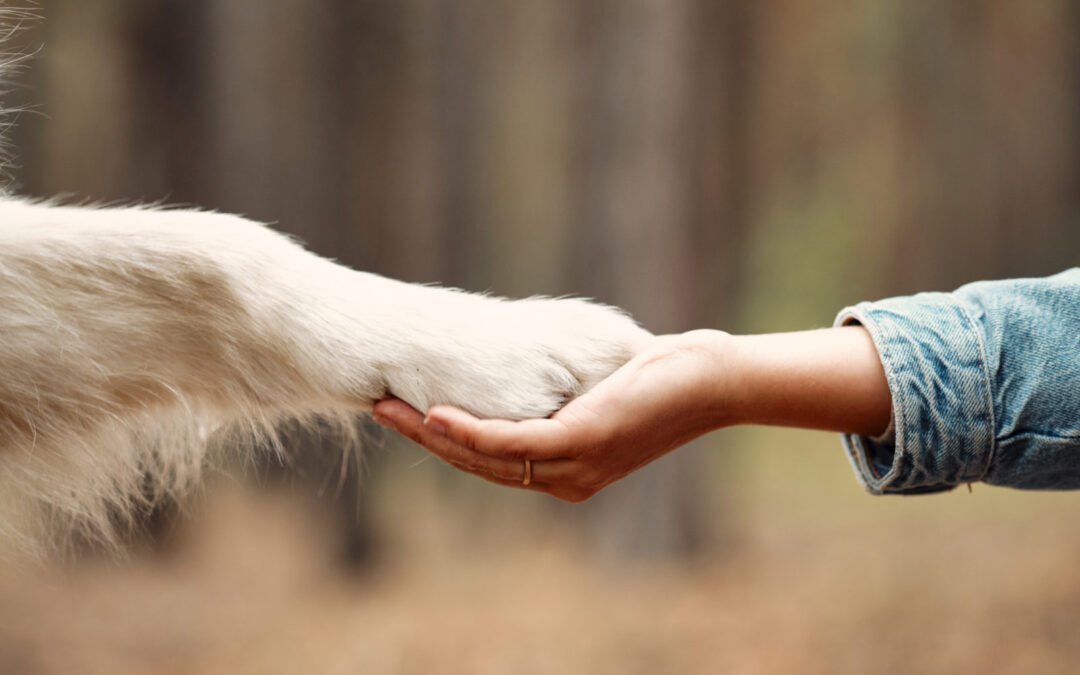Dog training can be one of the most rewarding experiences for both pet and owner. A well-trained dog is not only happier and more confident but also safer and easier to manage. With so many methods and rules to consider, however, it can be challenging to know where to start. Yet one principle stands out as the number one rule in dog training: consistency.
This article will delve into why consistency is the cornerstone of effective dog training, explore additional essential training rules, and cover the most important commands every dog should know. Let’s set you and your furry friend up for success!
Table of Contents
The Number One Rule in Dog Training: Consistency is Key
Consistency is the foundation of successful dog training. When training a dog, clear and steady routines help dogs understand what is expected of them. Because dogs are creatures of habit, they learn best when their training is predictable. Here’s why consistency is essential and how to make it work:
- Building a Clear Routine: Dogs don’t understand language in the way humans do, so they rely heavily on repeated actions and signals to learn. Using the same words, gestures, and tone for each command eliminates confusion and strengthens their understanding.
- Reducing Anxiety: Inconsistent training can lead to a confused, anxious dog who doesn’t know when or why they’re being corrected or rewarded. Consistency gives them confidence and clarity, making training less stressful for both of you.
- Reinforcing Good Behavior: Rewarding good behavior immediately and consistently strengthens the association between the action and the reward, making your dog more likely to repeat it.

Tips for Staying Consistent:
- Stick to a small set of commands, using the same words every time.
- Encourage everyone in the household to use the same commands and routines.
- Reward positive behavior as soon as it happens, and be patient as your dog learns.
Other Top Golden Rules for Effective Dog Training
Use Positive Reinforcement
Example: When I taught Bella, my Golden Retriever, to “stay,” I quickly realized she responded so much better to treats and praise than scolding. Every time she stayed, I’d shower her with “good girl!” and a tasty snack. Soon, she was staying on command and even holding it longer, all because she wanted that reward! It made training feel like a fun game instead of a chore.
Why It Works: Positive reinforcement taps into your dog’s natural desire to please and be rewarded. Rewarding good behavior encourages them to repeat it, while a positive atmosphere keeps training sessions enjoyable for both of you.
Be Patient and Realistic
Example: When I started training Cooper to walk on a leash, I assumed he’d get it within a few days. But Cooper had other plans—he wanted to pull and sniff everything! I had to remind myself not to rush him or get frustrated. I set small, realistic goals each week, like not pulling for just ten steps, then twenty. Over time, his leash manners improved, and I was grateful for my patience.
Why It Works: Just like people, dogs learn at their own pace. Being patient and setting realistic expectations prevents frustration and allows your dog to progress steadily without feeling overwhelmed.
Keep Sessions Short and Fun
Example: When I first trained Daisy, my Poodle, I made the rookie mistake of doing long sessions. She’d get bored and start ignoring me. I soon learned that keeping sessions under ten minutes and adding in play breaks kept her engaged and eager. Now, every training session feels like a fun bonding time instead of a drawn-out lesson.
Why It Works: Short sessions keep your dog focused and prevent them from feeling stressed or bored. Training should be fun, and keeping things light-hearted helps your dog stay excited to learn.
Stay Calm and Confident
Example: There was a time when I felt a bit unsure while teaching Rocky, my rescue, to “heel.” He sensed my nervousness and became hesitant. I realized I had to be the calm, confident leader he needed. Once I adopted a more assured tone and stance, Rocky seemed to relax and follow my lead. Dogs can pick up on your energy, so showing calm confidence makes a big difference.
Why It Works: Dogs are highly sensitive to our emotions. By staying calm and assertive, you show them that you’re a leader they can trust, which encourages them to follow your commands with confidence.
The Importance of Socialization as a Core Training Element
Socialization is a critical part of dog training that helps dogs become comfortable around other animals, people, and environments. Proper socialization can reduce fear-based behaviors and help your dog develop a balanced, calm temperament.
- Early Exposure: Introduce your dog to different environments, sounds, animals, and people during their puppyhood. Confidence and anxiety are built gradually through exposure.
- Controlled Socialization: Expose your dog to new experiences in a controlled way to avoid overwhelming them. A well-socialized dog is less likely to be aggressive or fearful.

Top 5 Most Important Dog Commands Every Dog Should Know
1. Sit
“Sit” is one of the first commands dogs learn. It’s simple yet foundational, as it helps manage your dog’s excitement and keeps them calm in different situations.
- Usage: Use “sit” to get your dog to settle down before meals, walks, or when meeting new people. It’s especially helpful in crowded or busy areas.
2. Stay
“Stay” is a crucial command for safety, allowing you to keep your dog in place and out of harm’s way.
- Usage: Use “stay” when crossing busy roads, when guests arrive, or when there’s a distraction. It reinforces patience and control.
3. Come
The “come” command, or recall, is essential for off-leash control and safety.
- Usage: Whether at a park or in your backyard, “come” ensures your dog returns to you. Always reward them when they respond to make the command rewarding.
4. Leave It
“Leave it” helps prevent your dog from picking up or investigating potentially harmful items.
- Usage: Use this command when your dog is interested in an object you’d rather they avoid, such as trash or harmful substances.
5. Down
“Down” is a great command to encourage calmness, especially if your dog tends to jump on people or get overly excited.
- Usage: Use “down” to help your dog relax, especially in settings where their energy level may be too high.
The Role of Body Language and Tone in Dog Training
Body language and vocal tone are highly intuitive to dogs. They rely on these cues to interpret commands and understand their owner’s intentions.
- Body Language: Use clear, deliberate gestures to guide your dog. For example, pointing to the ground can help reinforce a “down” command.
- Tone of Voice: A calm, firm tone is more effective than yelling. Dogs respond to confidence and consistency, so stay calm and assertive when giving commands.
Common Mistakes to Avoid in Dog Training
- Inconsistency: Using different commands or routines can confuse your dog, slowing their progress.
- Punishing Bad Behavior: Punishment can lead to fear and stress without teaching the dog the desired behavior. Positive reinforcement is far more effective.
- Skipping Foundational Commands: Basic commands like “sit” and “stay” are essential building blocks. Skipping them can make more advanced training difficult.
Tips for Training Different Dog Breeds
When it comes to training different dog breeds, I’ve learned that understanding each breed’s temperament and learning style can make a big difference. For instance, working breeds like Border Collies tend to thrive with structured, task-oriented training sessions, as they’re eager to please and enjoy mentally stimulating activities. On the other hand, more independent breeds, like Shiba Inus, can require a bit more patience; they may not respond as quickly to commands and often need extra motivation to stay engaged.
With more stubborn breeds, I make sure to use plenty of positive reinforcement, keeping sessions short and fun. For energetic breeds, like Labrador Retrievers or Australian Shepherds, I incorporate physical exercise into the training to help them release some of that energy. And for more sensitive breeds, like Whippets or Greyhounds, I use a gentle approach, focusing on calm commands and rewards to build their confidence.
By tailoring my approach to each dog’s natural personality, I’ve found training to be smoother and more enjoyable for both of us. It’s all about finding what works best for each unique pup!

Frequently Asked Questions (FAQ)
What is the hardest thing to train a dog to do?
One of the hardest things is recall, or teaching a dog to reliably come back when called, especially with distractions like other dogs, smells, or sounds around. Practicing patience and rewarding yourself is key!
What is the coolest trick to teach your dog?
“Play dead” or “bang!” is a fan favorite! It’s a dramatic trick that’s fun for both the dog and the audience, plus it helps with building focus and obedience.
What word makes dogs calm?
Commonly used words like “relax,” “easy,” or “settle” work well, especially when paired with a calming tone. Dogs respond not only to the word but to the calm energy in your voice.
What is the 7-7-7 rule for dogs?
The 7-7-7 rule refers to socializing puppies by introducing them to 7 new people, 7 new places, and 7 new experiences to help them become well-adjusted and confident adult dogs.
Do dogs follow rules?
Yes, dogs can learn to follow rules with consistent training. Dogs rely on structure and routines to understand what’s expected, and with positive reinforcement, they often enjoy following these “rules” for rewards and praise.

Conclusion
In my experience, consistency is truly the cornerstone of success in dog training. By providing clear expectations every time, I can guide my dog effectively. When I combine this consistency with positive reinforcement, patience, and clear commands, I see real progress. Following what is the number one rule in dog training has not only deepened my bond with my dog but also created a safe and enjoyable environment for everyone around us. It’s amazing to see how much easier training becomes when we stick to a steady approach.

